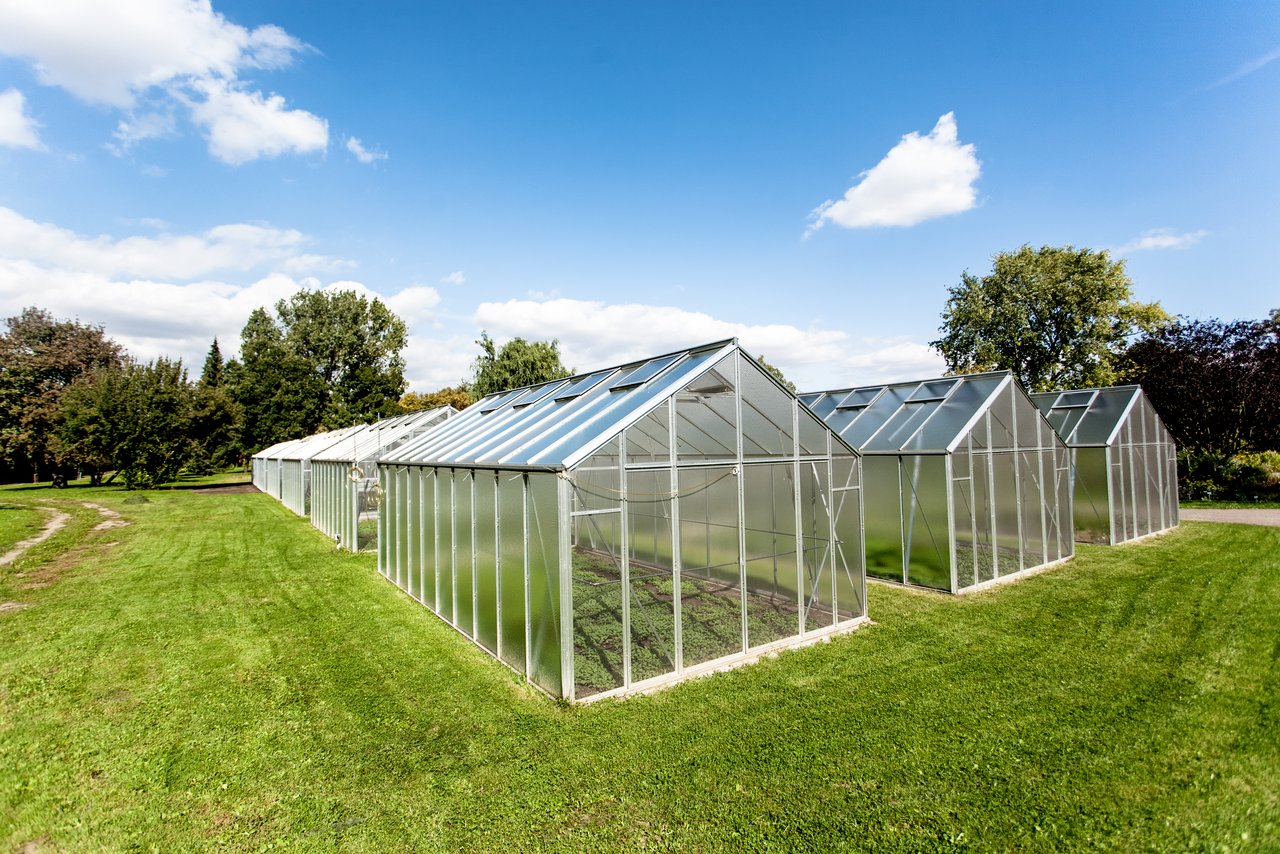Glasshouses
Glasshouses
The Gatersleben site maintains 30 large glasshouses, housing 83 independently controllable compartments; the total area covered by this facility extends to over 5,300 m2. Each glasshouse can provide supplementary lighting (some are equipped with LEDs), automatic watering, CO2 flushing, cooling, humidification and a black-out facility. The environmental control equipment installed allows for a wide range of experimental questions to be addressed and facilitates the task of maintaining the Federal Ex situ Gene Bank’s collection.
Two of the glasshouses are equipped with a "phenotyping platform", designed to automatically acquire phenotypic data from living plants, including measuring aspects of their root systems.
In addition, the site houses 203 small glasshouses, covering an area of over 3,400 m2, which are particularly favoured for the propagation of cross-pollinated Gene Bank materials: to achieve pollination, insects (mostly wild bees) are introduced in these glasshouses at the appropriate time.
Four heat-insulated transparent plastic tunnels, covering 960 m2, are used for the cultivation of cold-sensitive Gene Bank materials during the growing season.
The Institute’s rain-out shelter, covering 600 m2, is used as a means of testing materials for their tolerance of moisture stress in field conditions; the equipment is designed so that rainfall triggers the shelter to move to cover the trial area.
The area covered by cold frames extends to 1,460 m². The contents of the frames are protected from bird damage by netting, and individual frames can be covered if required.
